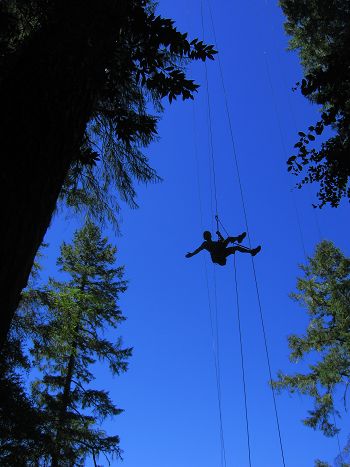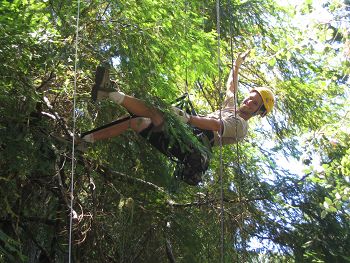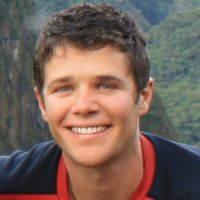Critical Zone Profile - JASPER OSHUN (environmental scientist, PhD student)
California and the Western United States are currently experiencing severe drought. I grew up in Sebastopol, California, in a water-conscious family. I went to school at Brown and returned to California in Fall 2006. In my lifetime I've seen widespread changes in land cover in Sonoma County – from apple orchards, savannah, and redwood forests to vineyards. Vineyards are thirsty, taking water from the Russian River. Runoff from vineyards also delivers large amounts of fine-grained sediment to the river, which warms the water temperature, making the river less hospitable for fish.
“The multidisciplinary nature of critical zone science has allowed me to explore across diverse disciplines. I’ve learned more about trees than I ever thought possible.” – Jasper Oshun
In order to sustainably manage our water resources, we need to understand the factors that impact the quantity of water that comes out of a watershed. Watershed output is dependent on precipitation, but also on the geology of the landscape and on the vegetation that covers that landscape. I’m particularly interested in how geology controls the distribution of vegetation and how natural and disturbed environments affect stream flow.
I am interested in water from a resource management perspective. Water is an essential component of life, as well as an essential resource for the agricultural, municipal, and energy sectors. In order to sustainably manage our water resources, we need to understand the factors that influence the quantity of water that comes out of a watershed. My research takes a detailed look at the inner workings of a hillslope, which is the source of baseflow (late summer river flow) in seasonally dry landscapes.
Water falling as precipitation naturally contains heavier and rarer isotopes of oxygen and hydrogen. We can measure the ratio of the heavy to light isotopes and trace these ratios through the hillslope and into trees. These measurements can reveal where trees are pulling from to get their water. We can then discover which species of trees depend on which subsurface reservoirs of water.
The timing and quantity of water used by different species of trees has a direct impact on the flow of water in streams. In a Mediterranean climate like Northern California, rivers flow in late summer due to the slow release of water from fractured bedrock. The uptake of water by vegetation may have a direct impact on these late season water flows.
My research shows that hardwoods are ‘opportunistic’ water users, making use of whatever water is easiest for them to pull up. They use abundantly mobile shallow soil water in the winter but can also access deep rock moisture if the soil dries out. Douglas fir trees, however, use deeper rock moisture year round. For most of the season Douglas firs use more water than hardwoods, but in late summer, when the subsurface dries, Douglas fir water use declines to amounts less than neighboring hardwoods. This is a question I want to pursue further, but it may be that a dense Douglas fir forest limits streamflow compared to a mix of hardwood species and grasses.
My goal is to make a novel contribution at the forefront of three disciplines: ecology, hydrology, and geomorphology (the study of landscape evolution: how wind, water, ice, and biota shape the landforms that we see).
This goal demands that I be an expert in three fields, a challenging endeavor.
Critical Zone science requires collaboration across disciplines and will hopefully lead to a more complete understanding of how to ensure the long-term sustainability of our environment. It is essential that we use critical zone science as a tool to better inform decision makers and the public.
To this end, I work with high school and undergraduate students on reforestation projects in Bahia de Caraquez, Ecuador. These projects are directed by Global Student Embassy, an NGO created by my brother and me in 2008. In December 2013 I led a group of six Berkeley undergrads to Bahia to investigate the role of root strength on slope stability. We measured the strength of hundreds of roots using a scale, hemostats, and screw clamps. We found important differences between species and found that trees add far more cohesion to the hillslope through greater root strength and greater root density than bushes do. We are now drafting a report that will help guide reforestation practices in this region.
:: By Linda Copman, staff writer ::
Studying the trees at Eel River Critical Zone Observatory.
Studying the trees at Eel River Critical Zone Observatory.
The Ecuador root strength investigation group.
News Category:
RESEARCH |
PEOPLE |
EDUCATION/OUTREACH
Explore Further







